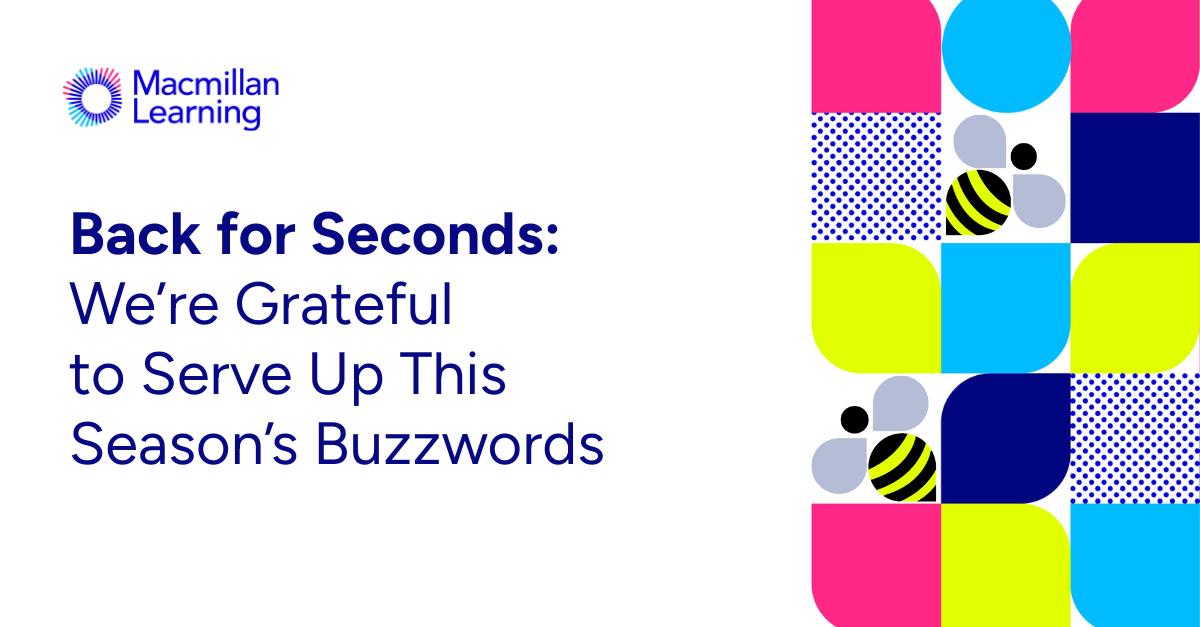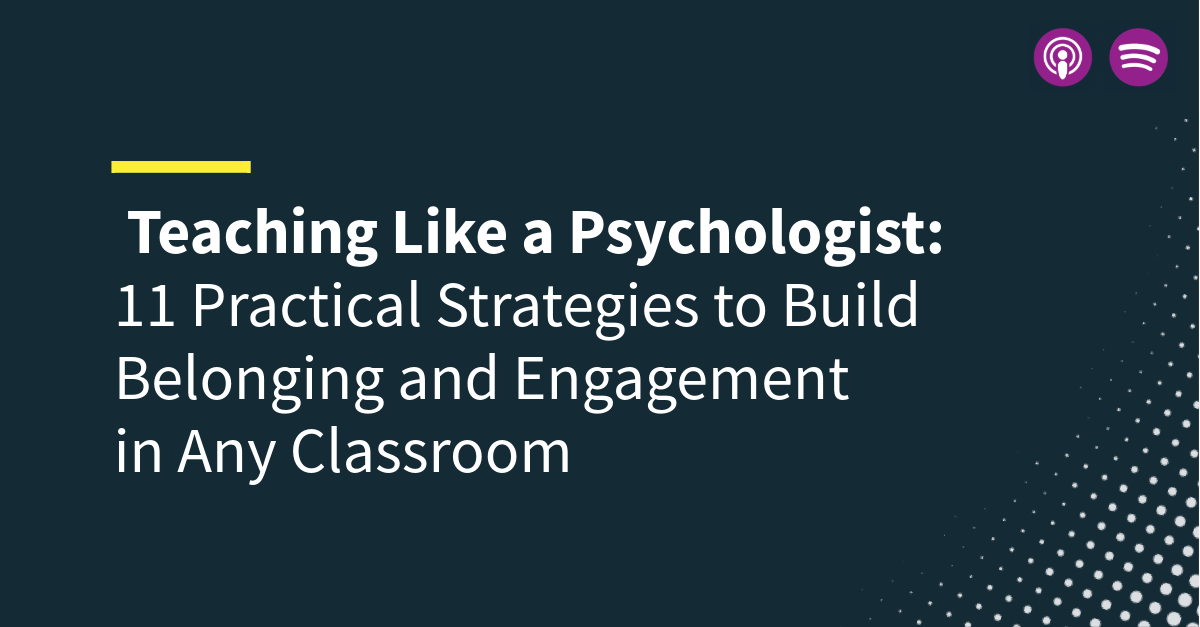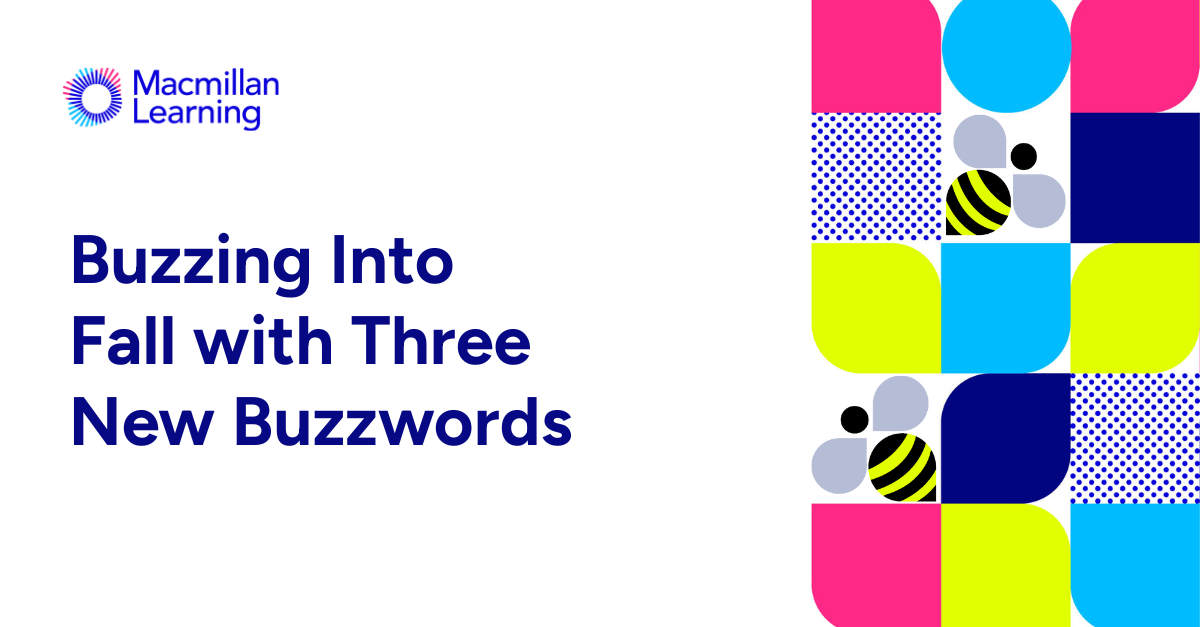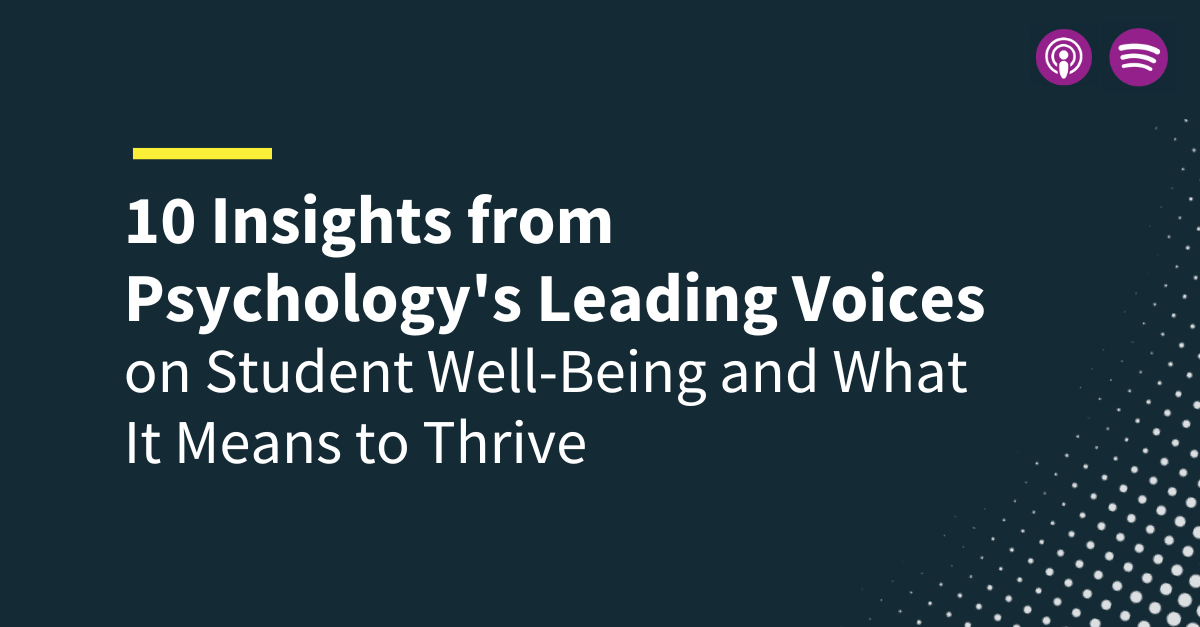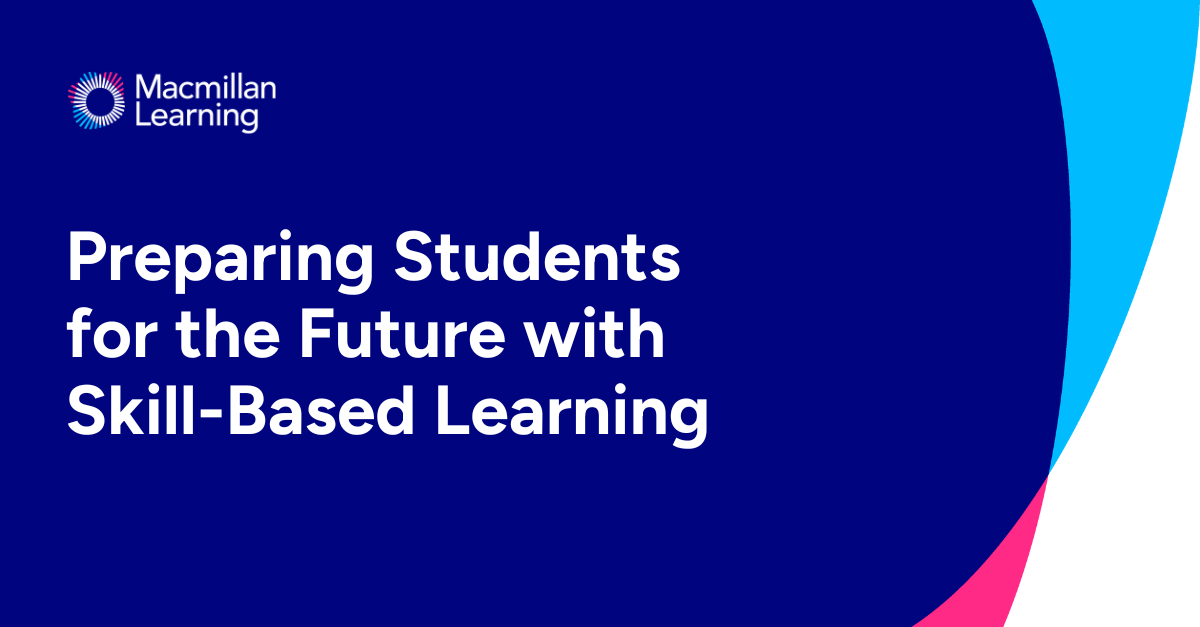-
About
Our Story
back- Our Mission
- Our Leadershio
- Accessibility
- Careers
- Diversity, Equity, Inclusion
- Learning Science
- Sustainability
Our Solutions
back
-
Community
Community
back- Newsroom
- Webinars on Demand
- Digital Community
- The Institute at Macmillan Learning
- English Community
- Psychology Community
- History Community
- Communication Community
- College Success Community
- Economics Community
- Institutional Solutions Community
- Nutrition Community
- Lab Solutions Community
- STEM Community
- Newsroom
- Macmillan Community
- :
- Newsroom
- :
- Learning Stories Blog
- :
- Learning Stories Blog - Page 2
Learning Stories Blog - Page 2
Options
- Mark all as New
- Mark all as Read
- Float this item to the top
- Subscribe
- Bookmark
- Subscribe to RSS Feed
Learning Stories Blog - Page 2
Showing articles with label 2022.
Show all articles
Macmillan Employee
02-21-2022
10:25 AM
The best designs are often the ones we don’t think twice about because they blend so seamlessly into our environment and benefit everyone who uses them. While it may go unnoticed, creating purposeful, accessible design often takes input from a variety of stakeholders; without consideration for and input from everyone, rather than from one specific user, accessible design can fail to hit the mark. Creating a seamless environment that supports all learners – with the input of a variety of stakeholders – is what Macmillan Learning strives to do as we develop our products and services.
To learn more about accessible design, Macmillan Learning recently sat down with Senior Development Editor, Sherry Mooney, and Associate Marketing Data Analyst, Vera Sticker, who also serves as the Cultural Awareness and Education Committee Lead for Macmillan Learning’s AVID (Awareness of Visible and Invisible Disabilities) Employee Resource Group. In our conversation, Sherry and Vera explained what the Curb-Cut Effect is, and they offered several great examples of architectural and product designs that benefit everyone - not only those with disabilities.
“We’ve all been there,” Vera said, “trying to push open a door designed to be pulled because of a misleading handle.”
“Or trying to get a stroller, wheelchair, or suitcase over a curb,” Sherry added.
Design problems like these might not just be irritating, they might even prevent people from being able to do simple things like accessing a building, enjoying a movie, or making dinner.
“People with disabilities face these obstacles regularly, sometimes on a daily (or even hourly!) basis,” said Sherry. “Over the years, as disability awareness has grown, many commonplace things have been modified or redesigned to enhance accessibility.”
“And this has led to a very cool discovery: time and again, the more accessible the design, the better it tends to be for everyone, with and without disabilities,” said Vera.
Such consistent results have warranted a name for this phenomenon: the Curb-Cut Effect. The discovery of the Curb Cut Effect led to a new design philosophy known as Universal Design, for which the University of Washington offers a lengthy but usefully precise definition.
Sherry and Vera provided three great examples of the Curb-Cut Effect in architectural design and products that people encounter or use on a daily basis.
Accessibility Wins
The Curb-Cut EffectCurb-Cuts
“Obviously, we have to start here,” said Vera. According to Sherry and Vera, curb cuts started appearing on American sidewalks in the 1940s and 1950s, when a few communities decided to invest in more accessible environments for disabled veterans. Thereafter, with the pressure from disability rights activists, the Americans with Disabilities Act of 1990 led to curbs being cut in every corner of the country.
“It was a big win for people in wheelchairs, but they were far from the only ones to benefit,” said Vera. “Curb cuts made life easier for anyone navigating with a stroller, shopping cart, rolling luggage, and just about any other thing on wheels.”
OXO Good Grips
“Another great example is the ‘Good Grips’ line of kitchen tools by OXO,” said Vera. “Although Good Grips products can be found in many kitchens (and almost every home goods store), the first product was created by Sam Farber with just one person in mind: his wife, Betsy, whose arthritis made it difficult to use a standard peeler.”
Farber founded OXO to create a line of tools that were easier for everyone to use, regardless of ability. The company applied universal design principles from the beginning, rather than trying to retrofit existing products.
Automatic Sliding Doors
“The first modern sliding doors weren’t created for people with physical disabilities,” explained Sherry, “but for a different group of people who still had trouble in their environment: the residents of Corpus Christi, TX, which is one of the windiest cities in the US.” In 1954, Lew Hewitt and Dee Horton recognized this community’s struggle to open and close swinging doors, so they invented the automatic sliding door.
“They’re great for people carrying groceries, using wheelchairs, walking with guide animals, and those juggling multiple small children or strollers,” said Sherry. “In short, automatic sliding doors are a simple solution that makes buildings more accessible for everyone.”
Helping Everyone
When it’s successful, we often don’t even notice universal design in action. Unfortunately, good intentions don’t guarantee success in universal design when it isn’t applied appropriately.
It’s not enough to only consider certain groups of people and to think of solutions based only on that group. In other words, adding accommodation for whomever might be deemed as the “default” user is not the same as removing barriers and increasing accessibility for all.
Universal Design is not limited to architectural design and products, but can be extended to the ways in which society as a whole is organized. Some companies offer their employees the flexibility to shift their working hours or to work longer on some days and shorter on others.
This would make jobs more accessible to those with chronic concerns like pain or fatigue because those individuals would be able to work when they feel best and rest when they need to. Many jobs offer this option as an accommodation when it’s specifically requested, but offering this sort of flexibility can make things better for everyone in terms of work/life balance. A good example of this benefiting everyone would be how it would allow those with different sleep schedules to be more productive during the times of day when they are feeling most energized and motivated.
“Obviously, this sort of approach wouldn’t work everywhere – for instance, in a retail or restaurant position* – much the same way that we don’t all have automatic sliding doors in our houses,” said Sherry.
There are requirements for particular places and roles that necessitate particular design choices. Whenever it is possible, however, universal design can point to better solutions for all users – and a better society for everyone.
*Sherry and Vera note that the most limiting positions are often held by those with fewer options because of structural economic, racial, or educational discrimination. Therefore, even as we acknowledge the challenges of universal design in these more constraining situations, we also embrace the challenge of trying to find ways to continue to apply universal design and to improve access and quality of life unilaterally.
... View more
Labels
-
2022
0
0
2,092
Macmillan Employee
02-14-2022
06:10 AM
Student engagement remains a hot topic during the ongoing pandemic. How are instructors, who normally offer their classes in-person, managing to keep students engaged in their fully or partially virtual classrooms? For William Curington, instructor of English at Rio Hondo College, it's important to make sure his students feel they are part of a community - even if it’s an online, digital community.
William Curington, Instructor of English at Rio Hondo College
Successful online teaching makes use of the best digital learning platforms, and in his classroom, William has used Macmillan Learning’s Achieve platform with his teaching of A Writer’s Reference. The Achieve platform includes an interactive e-Book as well as extensive learning materials with pre-class, in-class and post-class activities. Macmillan Learning asked William Curington about his experience switching to this new digital platform.
People are hesitant to embrace change, but what would you say are the benefits of moving to Achieve vs your experience with LaunchPad?
I think change is difficult for anyone. While I enjoyed using LaunchPad, I have found Achieve to be more “customizable” for my individual class needs. The pandemic kind of forced instructors everywhere to become more tech savvy and I was able to use some of that transitional time to find new and creative ways to use the platform.
How do Achieve and LaunchPad differ?
I feel like Achieve gives more options to me as an instructor when customizing it for the needs of my own course. LaunchPad certainly worked, but it felt more pre-packaged. With Achieve, I have more control of how I’m utilizing it and what features I’m using to connect with my class. Most recently, I have worked with integrating Achieve into our LMS, Canvas, which I’ve found very effective.
We know that student engagement–especially now–is a large issue and so important to student success. How do products like Achieve fit into that?
As a community college instructor, I have students of various levels in all my classes, and one of the things I’ve found very helpful are the adaptive quizzes (LearningCurves) Achieve offers. It is nice to know that students can work at their own pace and the adaptive quizzes will identify areas students need work on so they can adjust accordingly. This kind of individualized, self-paced, non-threatening practice of concepts is exactly what many college students need.
How have students responded to Achieve overall?
Students have responded well to Achieve and have taken the time to tell me it has really helped them develop their writing skills. Class time is limited, and I think Achieve is extremely helpful because it allows an instructor to make sure that students are getting reinforcement and feedback on concepts outside of traditional class meetings. I can dedicate more class time to things like discussion and peer review and still know that my students are receiving the self-paced support they need for concepts that are foundational for their writing skills.
This interview is part of a series focusing on how digital learning is being used in college classrooms and, in particular, what the transition to Achieve has been like.
About Achieve: Macmillan Learning built it’s new digital learning platform Achieve to help students of all abilities and backgrounds succeed. It offers the content, tools and insights about student success to do just that. Achieve was designed with active learning in mind, and can be used in traditional, online, hybrid, blended, or a fully “flipped” classroom, with options for both synchronous and asynchronous learning to support engagement. It was co-designed with more than 7,000 students and over 100 leading educators and learning scientists both at our company and on our independent review boards. Learn more about Achieve.
... View more
Labels
-
2022
0
0
4,448
Macmillan Employee
02-10-2022
11:44 AM
The cover of Macmillan Learning’s first edition of Preparation for Calculus features a picture of Olympic skateboarder and X Games champion, Lizzie Armanto. For many students, Lizzie’s image provides a point of entry into the course; math can be cool, and everyone should feel welcome to enroll.
Macmillan Learning asked Lizzie what it meant to her to be featured on the cover of a textbook, to reflect on her own schooldays, and if she had any words of encouragement for students pursuing something new or challenging.
Photograph by Anthony Acosta.
You were the first female featured on the cover of Transworld SKATEboarding. You’ve been featured on the cover of Thrasher Magazine, and you’re also a playable character in several skateboarding video games. Did you ever imagine you’d be featured on the front cover of a textbook?
Not at all. I think people are more excited about the cover of Preparation for Calculus than they were about Transworld.
Lots of students on social media are saying that seeing you on the cover is the first time they've felt represented by a textbook, and it's inspiring them to consider the course. What would you say to them?
Studying/learning new things can be challenging and maybe even daunting. Applying math to skateboarding is a fun way to make learning and practicing new 'math things' relatable. Hopefully it makes the work seem less like work and more fun.
Can you describe for those of us less knowledgeable about skateboarding the maneuver or trick you’re performing on the front cover of this book?
The trick is called a “frontside invert” aka “frontside handplant”. You basically go up the wall forward and as you approach the lip, or “coping” of the ramp or bowl, you reach out with your leading hand to grab the lip while at the same time grabbing the toe side edge of your board with your trailing hand. Your body will instinctively turn towards the direction you turn your head and the forward momentum combined with looking over your forward facing shoulder as you leave the bowl (hands still holding the lip and board respectively) will naturally bring you back around towards the ramp or bowl. You have to pull your weight in sometimes in order to make sure you do not land on the deck of the ramp. Once you’ve come all the way around and have spotted your re-entry point, you bend your knees and begin to slowly stand as you’re entering back into the ramp or bowl. This sounds complicated but once you see it, the trick is actually pretty simple.
What’s a fond memory that you have of your school days, high school or college, outside of skateboarding?
Still to this day, when I walk through the history building in Santa Monica High School, I can remember feeling a cesspool of emotions in ninth grade. Everything was new to me, the classes, campus, teachers, and kids. I knew I wanted to pursue skateboarding but at the time it felt like some far off dream. There were a few teachers that made my high school years pretty enjoyable. Their passion for what they did or the subject they taught had an impact on me. Teachers don't get enough credit and the bad ones really give the rest a bad rap.
You competed for Finland in the 2020 Tokyo Summer Games. What have you learned while training for the games that may help students as they face their own challenges?
Aside from rehabbing a serious injury nine months prior to the Olympics, I didn’t really change anything as far as training or preparing for the Olympics. In all actuality, the Olympics was one of the easier contests for us as professional skaters are concerned. Due to the quota system, no country could send more than three qualified skaters and with the majority of top pros being from three countries (USA, Brazil, Japan) there were quite a few top skaters who could have medaled but were not able to compete in Tokyo because they fell outside of the country quota. X Games and Vans Park Series (pro tour) are much more competitive than the Olympics were.
You’ve been described as a trailblazer in the sport of skateboarding. Less than twenty years ago, women were earning less than 5% in winnings compared to men's event winners in the X Games. When you won skateboard-park gold in your first X Games in 2013, the prize amounts were equal. What advice would you give to other women and girls pursuing their dreams in male-dominated fields or spaces?
Don’t be afraid to go for it or fail. Everyone has to start somewhere. Be patient with yourself and just keep at it, eventually you'll get to where you want to be if you keep at it or maybe even end up somewhere better.
You’re passionate about promoting the sport of skateboarding in lesser developed countries, and you’ve helped run skateboarding workshops, clinics, and demos. Why is it important to share skills with others?
Skateboarding is such an amazing lifestyle and teacher of things on and off the skateboard. Skateboarding teaches resilience like when you fall, you get back up. Little things like this go a long way when you start applying it to other areas of life.
You can follow Lizzie on her Instagram and see her on the cover of Preparation for Calculus here.
... View more
Labels
-
2022
0
0
5,641
Macmillan Employee
02-02-2022
06:10 AM
In anticipation of Valentine’s Day, many students all around the world will be celebrating love with their romantic partners by sending cards, giving gifts, and sharing candlelit meals. While doing this, they will be demonstrating their interpersonal communication skills which help them to competently communicate, interact, and work with individuals and groups or, in this case, a romantic partner. According to Dr. Kelly Morrison, Professor of Communication Studies at the University of Alabama at Birmingham and co-author of Reflect and Relate, “love is defined and created by how we interpersonally communicate.”
Much of what’s learned about interpersonal communication is derived from social and mass media, family and peers, personal experiences, and cultural norms and practices. That includes the communication that’s used throughout romantic relationships. But that’s not where the learning needs to end. From combating stereotypes about love as depicted in the movies, to understanding the various stages of falling in love, students can learn a lot about the intersection of romantic relationships and interpersonal communication in a college classroom.
From Hallmark and Disney movies to popular love advice books, misinformation about relationships is pervasive. For example, students often learn from these media that passionate love should be the ultimate relationship goal. In interpersonal communication courses, students learn that there is more than one way to demonstrate love, with passionate love being just one of them. “Our job as educators is to give our students trustworthy knowledge and help them apply it to their close relationship challenges,” said Dr. Steven McCornack, Professor at University of Alabama at Birmingham and co-author of Reflect and Relate.
There’s also an opportunity for students to learn what love is -- and what it isn’t. According to Professor McCornack, it’s not uncommon to conflate physical intimacy with love, but the two do not always correlate. “Across the globe and throughout history, people have been physically involved with those with whom they’re not intimate; and intimate with those with whom they’re not physically involved.” Professor Morrison explains that love is “created and sustained, moment by moment, day in and day out, through our communication, what we share, and how we support one another.”
Further, men aren't from Mars, women aren't from Venus, and there is no such thing as a one-size-fits-all way to approach love. The different love attitudes expressed in a relationship lend themselves to vastly different communication styles. “If you possess a more practical, as opposed to a more romantic attitude about love, you likely will also see variations in what and how people communicate about love,” said Professor Morrison.
In addition to tackling misconceptions about romantic relationships, interpersonal communication classes also discuss topics critical to building and maintaining successful relationships: from how to approach conflict to the importance of emotions. This kind of knowledge helps students to make more informed choices regarding how they communicate and respond to another person's communication. “We control our own romantic relationship destinies through the choices we make regarding how we communicate. Our choices determine our communication; and our communication creates our romantic relationship outcomes,” said Professor McCornack.
Learn more about the intersection of romantic love and interpersonal communication from a webinar when the two Macmillan Learning authors and interpersonal communication professors spoke about “love attitudes and relationship maintenance.” The webinar is free for instructors and will provide a complimentary assignment for instructors to use on Valentine’s Day or when otherwise discussing romantic relationships. Access it for free here.
... View more
Labels
-
2022
2
0
5,404
Macmillan Employee
01-24-2022
07:58 AM
While the pandemic forced many instructors to adapt their teaching style for a fully or partially virtual classroom, the use of digital learning platforms will remain a key component of both remote and in-person learning moving forward. Dr. Darcie Rives-East used Achieve during the pandemic when her teaching moved completely online, and she’ll continue to use the platform for her in-person teaching.
The Achieve platform includes an interactive e-Book as well as extensive learning materials with pre-class, in-class and post-class activities. Dr. Darcie Rives-East, a Professor of English and First-Year Seminar Director at Augustana University, shared with us how she got the most out of this new platform during her time teaching remotely and which features she’ll continue using once she resumes in-person teaching. She’s used The Writer’s Reference with the Achieve platform.
What have been some challenges with teaching–especially with online learning–since the pandemic started? How have you addressed them?
A major challenge for me as a composition instructor was having students peer edit classmates’ papers online. I used Achieve’s peer editing function to arrange peer editing partners, as well as the function’s ability to guide students through the questions I wanted them to focus on while they were giving advice to their partners. I found the peer editing function to be a great way to have students interact and work with one another despite not being physically present in the classroom.
People are hesitant to embrace change, but what would you say are the benefits of moving to Achieve vs your experience with LaunchPad?
Achieve has so many more capabilities than LaunchPad (such as peer editing and instructor editing of papers, paper assignment templates, etc.), as well as more exercises than LaunchPad. I also thought it was easier to integrate Achieve with an LMS (such as Canvas), and, as a writing program director, I was able to set up and monitor accounts for program instructors.
Why did you first decide to use online tools in your class?
During the pandemic, prior to vaccines, I had to be completely online due to prior health considerations. Therefore, I wanted to use all tools available to me in order to replicate and even improve how I teach composition in the physical classroom. Achieve provided me with the resources I needed to teach writing online without sacrificing quality. When I return to the physical classroom, I plan to still use the resources of Achieve to allow a “flipped classroom,” where students can learn and practice certain grammar lessons online, as well as participate in the writing sequence, so that we have more time to discuss writing in the classroom.
This interview is part of a series focusing on how digital learning is being used in college classrooms and, in particular, what the transition to Achieve has been like.
About Achieve: Macmillan Learning built it’s new digital learning platform Achieve to help students of all abilities and backgrounds succeed. It offers the content, tools and insights about student success to do just that. Achieve was designed with active learning in mind, and can be used in traditional, online, hybrid, blended, or a fully “flipped” classroom, with options for both synchronous and asynchronous learning to support engagement. It was co-designed with more than 7,000 students and over 100 leading educators and learning scientists both at our company and on our independent review boards. Learn more about Achieve.
... View more
Labels
-
2022
0
0
6,204
Macmillan Employee
01-06-2022
06:46 AM
After a mostly in-person fall semester, many instructors are now preparing to start the spring semester differently than they had anticipated. While the pandemic has presented many challenges to teaching and learning, instructors have found that the right digital learning system can make all the difference in maintaining engagement and supporting student success in the virtual classroom.
At the start of 2020, Macmillan Learning launched its new digital learning platform Achieve, and many instructors have already made the switch to it from Launchpad. The Achieve platform includes an interactive e-Book as well as expansive learning materials with pre-class, in-class, and post-class activities.We asked Dr. Michael Stroud, Professor of Psychology at Merrimack College, about digital learning and his switch to Achieve for Exploring Psychology.
What have been some challenges with teaching–especially with online learning–since the pandemic started Psychology Prof. Michael Stroud? How have you addressed them?
I’d say the biggest challenge is with student morale and engagement. Students do not seem to be as motivated to learn as before. The way I’ve addressed this is by focusing more on hands-on tasks for more engaging learning in the classroom. Students do not seem to be interested in hearing lectures, but rather creating projects instead.
People are hesitant to embrace change, but what would you say are the benefits of moving to Achieve vs your experience with LaunchPad?
The user interface with Achieve is much more fluid. Finding activities and materials and assigning them is much easier as well. Achieve is essentially Launchpad with all the kinks worked out; it’s a cleaned up version, which makes content delivery much more seamless.
We know that student engagement–especially now–is a large issue and so important to student success. How do products like Achieve fit into that?
It keeps students on task no matter what is going on in the classroom. This is especially the case for LearningCurve since it requires students to pay attention rather than mindlessly click.
How have students responded to Achieve overall?
Students love Achieve. They enjoy reading more for a purpose and with interactive activities rather than just reading plain text.
This interview is part of a series focusing on how digital learning is being used in college classrooms and, in particular, what the transition to Achieve has been like.
About Achieve: Macmillan Learning built it’s new digital learning platform Achieve to help students of all abilities and backgrounds succeed. It offers the content, tools and insights about student success to do just that. Achieve was designed with active learning in mind, and can be used in traditional, online, hybrid, blended, or a fully “flipped” classroom, with options for both synchronous and asynchronous learning to support engagement. It was co-designed with more than 7,000 students and over 100 leading educators and learning scientists both at our company and on our independent review boards. Learn more about Achieve.
... View more
Labels
-
2022
0
0
7,160
Popular Posts
Diversity of Thought and Our Educational Mission
Chuck_Linsmeier
Macmillan Employee
10
0
From Attention to Retention: Unpacking Gagné’s Principles with Achieve
bill_yin
Macmillan Employee
7
0
Supporting Students with Disabilities (including the ones you can’t see)
RachelComerford
Macmillan Employee
7
0


